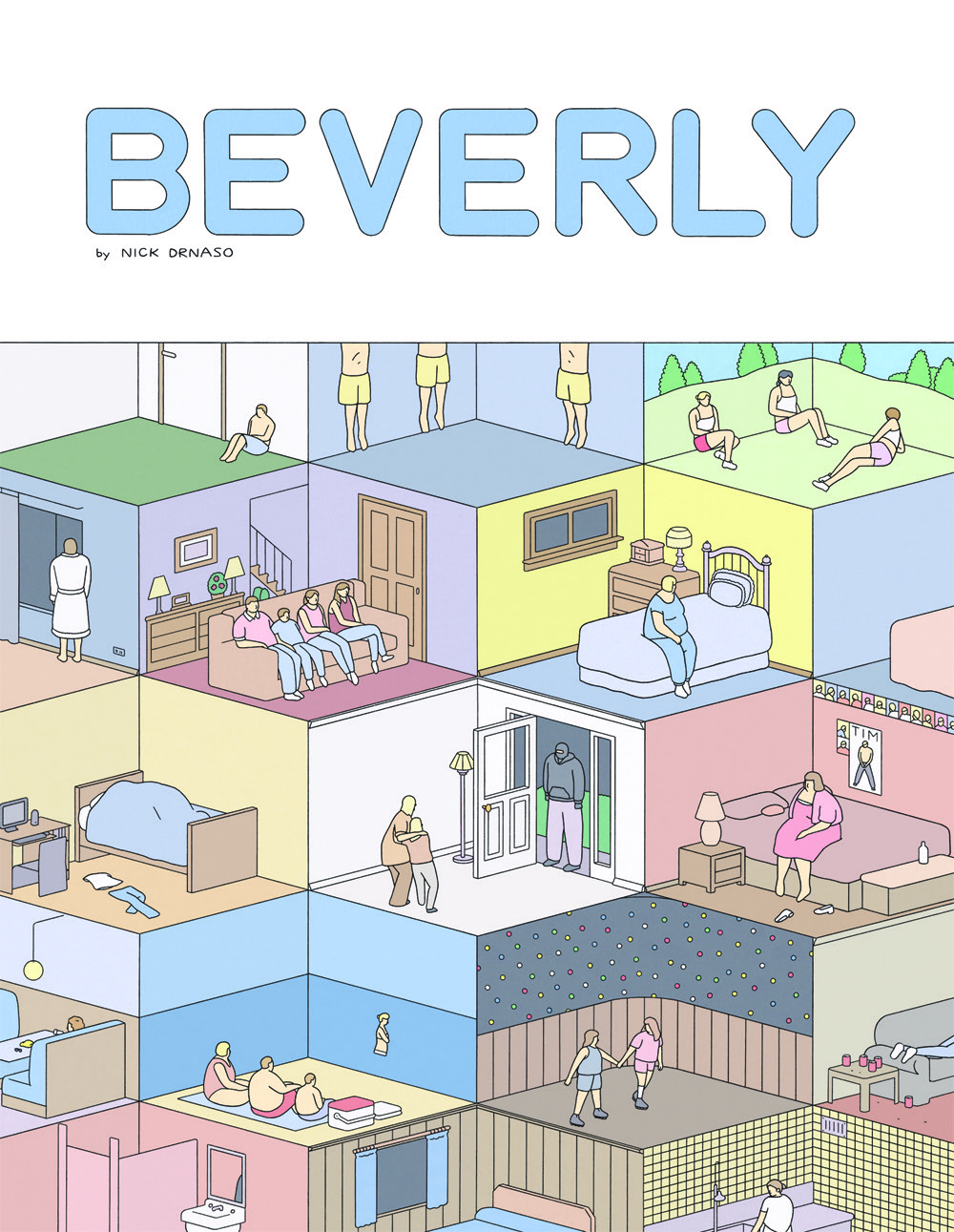
Beverly, Nick Drnaso, 134 pgs, Drawn and Quarterly, drawnandquarterly.com, $24.95
Nick Drnaso knows violence. While bloody bodies only appear in less than half the stories of Beverly, Drnaso captures everyday severity with grace and subtlety. This debut collection of fictional graphic short stories stars Cara, a moody teenager in suburban Illinois. She brags about day long benders, is sexualized by her brother, and will eventually lie dead in the street. Beverly’s quietness supports, rather than mutes the deep sadness at its centre.
The stories of Beverly show bursts of action in Cara and her peers’ lives, as they treat each other with coldness and the casual judgement of youth. A man is fired, only to be gossiped and laughed about by Cara and her friends in “The Grassy Knoll”; Cara’s young brother is humiliated by adolescent strangers in “The Lil’ King”; a girl claims “I almost hope he does it again. As long as it’s not me,” about a man raping a classmate of Cara’s in “Virgin Mary”. Their dialogue is barbed yet bored, showing common meanness that is maddening in its familiarity. Drnaso expertly gives his characters typical names, dressing their Lego-esque bodies in delicate pastels. They’re strangley cute despite being anonymous, mass produced. They could be anyone.
Beverly has an eeriness you don’t ponder, but feel, as Drnaso proves words are sometimes mere middle men. The landscape to Cara’s family vacation in “The Lil’ King” is empty, like her own neighbourhood in “Virgin Mary”, and volunteer worksite in “The Grassy Knoll”. Characters sit in empty rooms, silent and sad, and facial expressions are piercing. Twisted with ugly honesty, Cara cries at her mother’s embarrassment in “The Saddest Story Ever Told”, and Wes turns away from his drunken friend in “Pudding”. With clever subtlety, Drnaso exposes the everyday harshness his characters won’t admit, forcing a curiosity for what could happen next in their all-too-realistic lives. (Grace Bueler)
